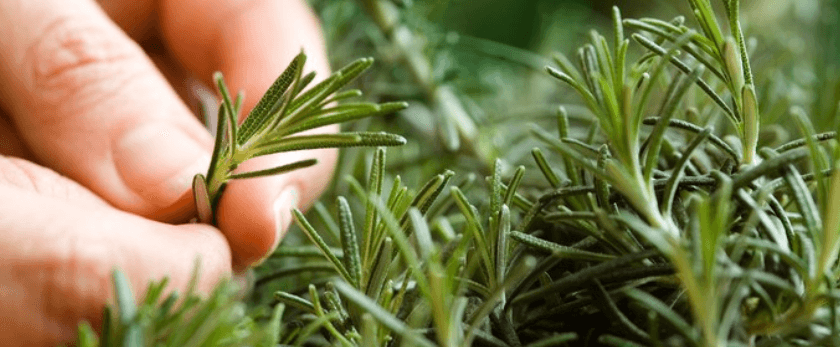Rosemary is a versatile and fragrant herb that is not only a staple in many kitchens but also a beautiful addition to any garden. It is a hardy plant that can thrive in a variety of conditions, making it a great choice for both experienced and novice gardeners. In this article, we will discuss how to grow rosemary and provide tips for caring for this herb to ensure a successful harvest.
Choosing the Right Variety
Before you start growing rosemary, it is important to choose the right variety for your needs. There are several types of rosemary, including upright, creeping, and prostrate varieties. Upright rosemary is the most common and can grow up to 6 feet tall, making it a great choice for larger gardens. Creeping rosemary is a low-growing variety that is perfect for ground cover or hanging baskets. Prostrate rosemary is a trailing variety that is ideal for cascading over walls or in containers.

Planting Rosemary
Rosemary can be grown from seeds, cuttings, or transplants. However, growing from seeds can be a bit challenging, so it is recommended to start with transplants or cuttings. You can purchase transplants from a local nursery or take cuttings from an established rosemary plant.
When planting rosemary, choose a location that receives at least 6-8 hours of sunlight per day. The soil should be well-draining and slightly acidic, with a pH between 6.0-7.0. If your soil is too alkaline, you can add some peat moss or compost to lower the pH.
Dig a hole that is slightly larger than the root ball of your transplant or cutting. Gently loosen the roots before placing the plant in the hole. Fill the hole with soil and press down firmly to remove any air pockets. Water the plant thoroughly after planting.
Watering
Rosemary is a drought-tolerant plant, so it does not require frequent watering. In fact, overwatering can lead to root rot and other diseases. Water your rosemary deeply once a week, allowing the soil to dry out between waterings. During hot and dry weather, you may need to water more frequently.
Light
As mentioned earlier, rosemary requires at least 6-8 hours of sunlight per day. It is best to plant it in a location that receives full sun, but it can also tolerate partial shade. If you are growing rosemary indoors, place it near a south-facing window where it can receive plenty of sunlight.
Soil
Rosemary prefers well-draining soil that is slightly acidic. If your soil is heavy and clay-like, you can amend it with compost or sand to improve drainage. Avoid using fertilizers that are high in nitrogen, as this can lead to excessive foliage growth and affect the flavor of the herb.
Fertilizer
Rosemary is a low-maintenance plant that does not require much fertilization. However, if you notice that your plant is not growing as vigorously as it should, you can apply a balanced fertilizer once a month during the growing season. Avoid using fertilizers that are high in nitrogen, as this can lead to excessive foliage growth and affect the flavor of the herb.
Pruning
Pruning is an essential part of caring for rosemary. It not only helps to maintain the shape and size of the plant but also promotes healthy growth. Prune your rosemary in the spring before new growth appears. You can also lightly prune throughout the growing season to remove any dead or damaged branches.
Best Time to Grow Rosemary
Rosemary can be grown year-round in mild climates. In colder regions, it is best to plant rosemary in the spring after the last frost. This will give the plant enough time to establish itself before the colder months. In warmer regions, you can plant rosemary in the fall for a winter harvest.
Common Problems with Rosemary
While rosemary is a hardy plant, it can still face some common problems. Here are a few issues you may encounter and how to address them:
- Pests: Rosemary is generally pest-resistant, but it can be susceptible to spider mites, aphids, and whiteflies. You can use insecticidal soap or neem oil to control these pests.
- Diseases: Overwatering can lead to root rot and other fungal diseases. To prevent this, make sure to water your rosemary deeply but infrequently. If you notice any signs of disease, remove the affected parts of the plant and treat with a fungicide.
- Winter Damage: In colder regions, rosemary can suffer from winter damage due to freezing temperatures. To protect your plant, cover it with a layer of mulch or bring it indoors during the winter months.
Responsible Disposal Methods
When it comes to disposing of rosemary, it is important to do so responsibly. If you have any leftover plant material, you can compost it or use it as mulch in your garden. If you are using a container to grow your rosemary, make sure to clean and disinfect it before reusing it for another plant. If you are disposing of a dead rosemary plant, do not throw it in the trash. Instead, chop it up and add it to your compost pile.
In Conclusion
Growing rosemary is a rewarding experience that can add beauty and flavor to your garden. By following these tips and caring for your plant properly, you can enjoy a bountiful harvest of this fragrant herb. Remember to choose the right variety, plant in a sunny location with well-draining soil, and water and prune your rosemary regularly. With a little bit of effort, you can have a thriving rosemary plant that will provide you with fresh herbs for years to come.










